Crisis Management Plan in Practice: 2020 Checklist for Your Business
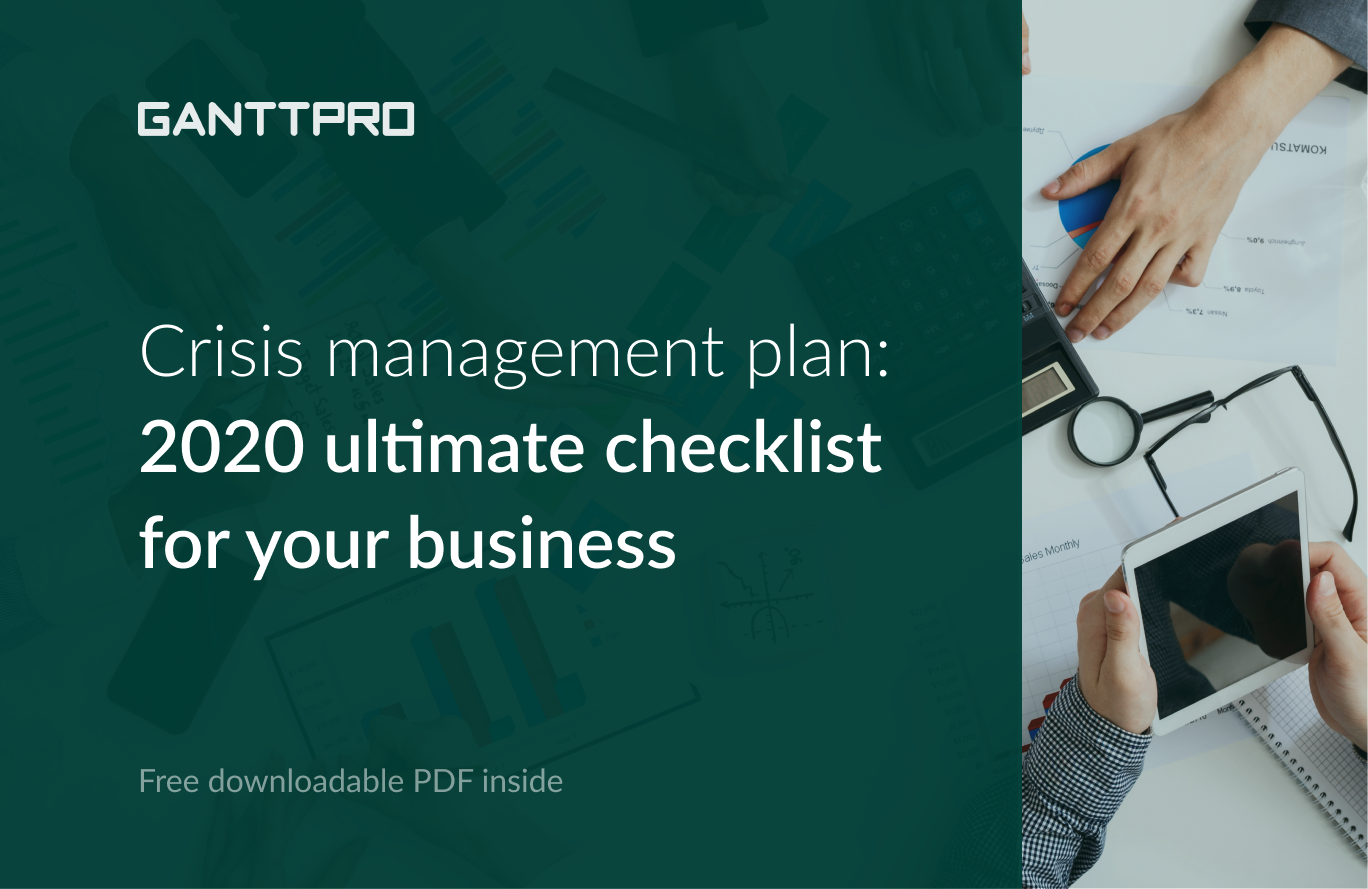
The first months of 2020 have changed the usual way we used to live our lives. Now, we simply can’t go to a restaurant, meet with friends, visit our parents, and do so many other things. There is even an unusual feeling when you just go outside to buy some food. You know what is to blame: COVID-19.
With the direct impact of the virus on our lives, all we can do is to adapt to the new models of behavior where physical distancing plays a key role. And hope that the sunbeam is already on its way to dispel the uncertainty and cut the challenges we all suddenly faced.
While these new patterns can be tough to follow, however, they are not the most difficult challenges. There is also another side. Businesses from all over the world experience tough times: some already shut down or are close to it. Some organizations still operate but have to reduce the activity.
In this battle against the virus, employees are on the front line feeling this impact right away. People are losing their jobs. Specialists already admitted that most countries would go through a severe downturn. The global crisis is inevitable.
Meanwhile, the leading economies are already suffering.
Crisis: what are the expectations?
McKinsey & Company conducted their analysis and compared the data to numerous other sources. The key takeaways are straightforward: it could the biggest crisis in this century. What is more, its consequences in the European region and the USA could lead to the largest economic decline since the Great Depression.
In Canada, for example, 438 (73%) out of 600 entrepreneurs were already negatively affected by the crisis by mid-March, according to the survey conducted by the Business Development Bank of Canada.
If the decline in GDP in the USA would keep the pace of Q2, the country could approach the state of the economy similar to its state after WW2, according to the estimations by McKinsey & Company.
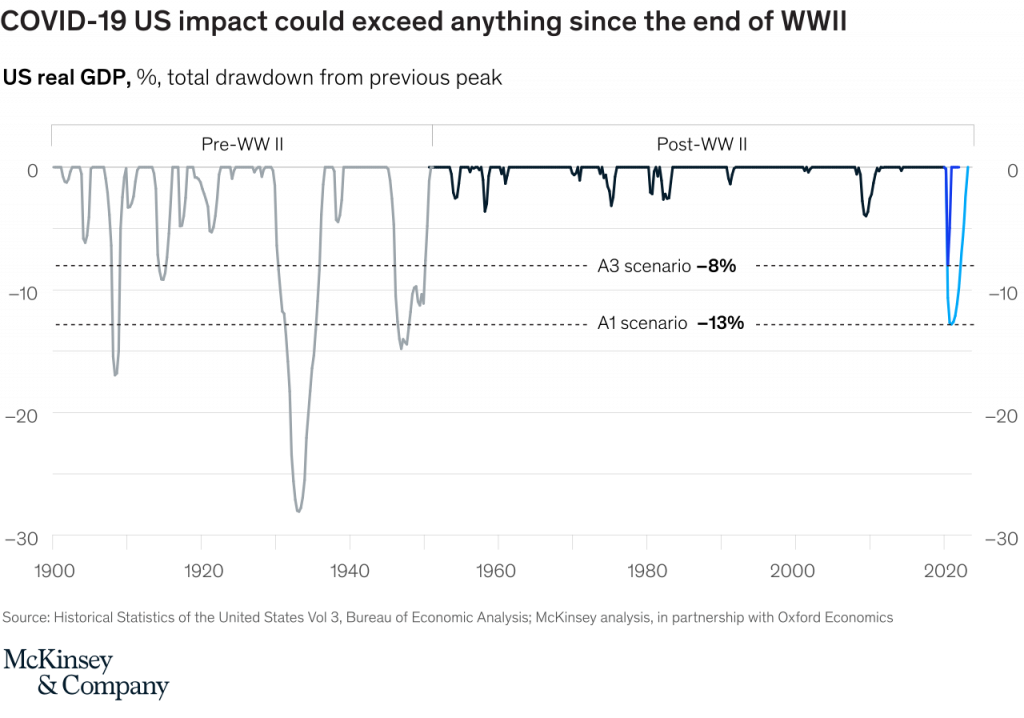
The future is still not clear and different scenarios are possible. However, as of April 2020, countries, where the outbreak was destructive, are already on their way to mitigate the lockdown. If the positive changes will keep the pace, we can expect quarterly growth in Q3 and Q4, particularly, in the USA, according to the Business Development Bank of Canada.
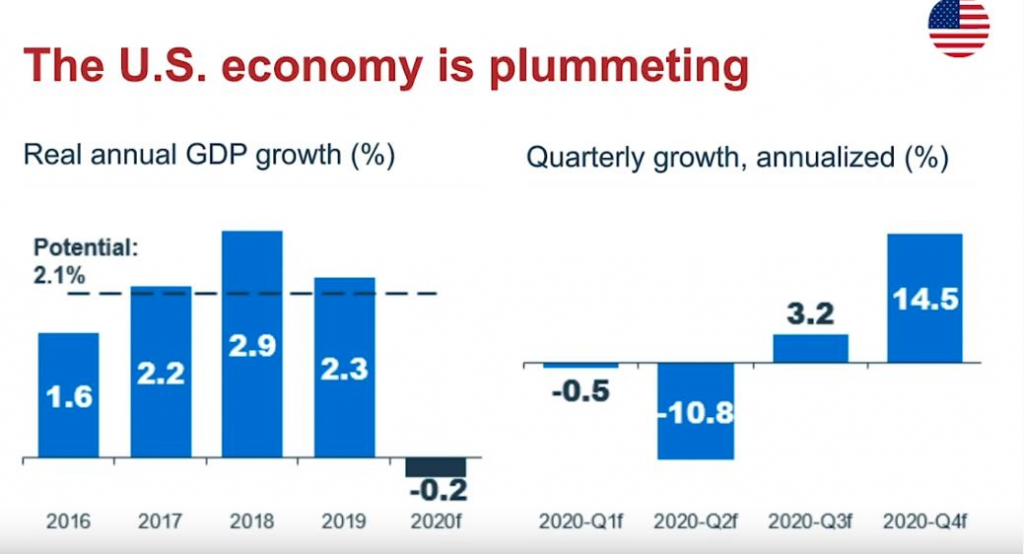
Among others, McKinsey & Company had also proposed a similar scenario. If the virus got contained in the USA and the European region, after sharp declines in GDP in Q2, we could already expect a return to pre-crisis levels in Q4 in the USA and Q1 2021 in the European zone.
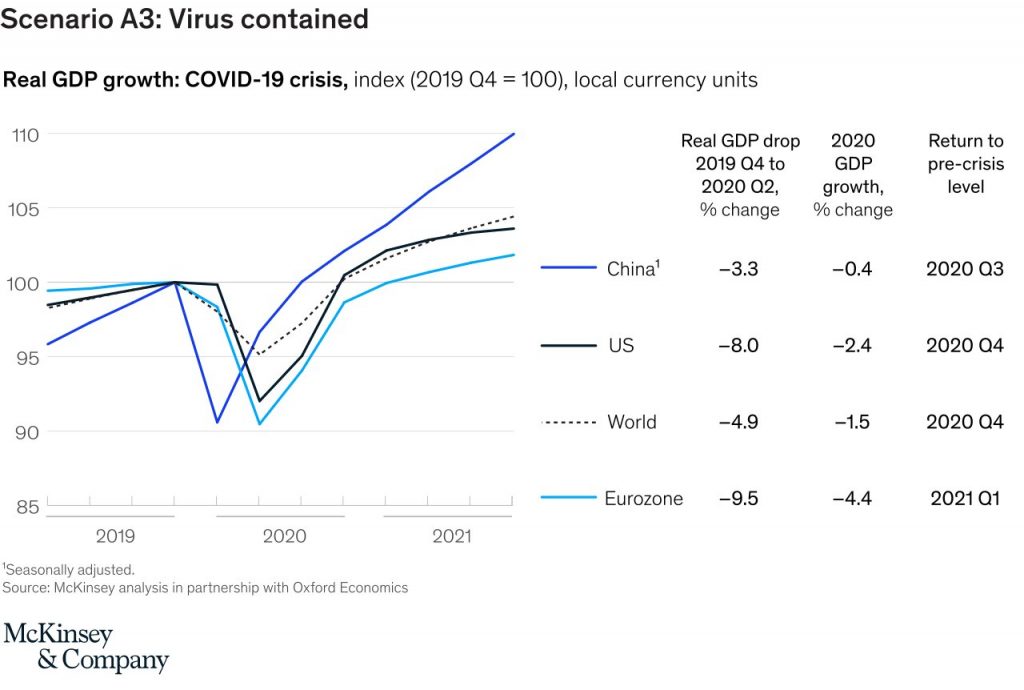
Whatever the scenarios are, we are still at the point where we do not know what to expect.
Preparing for crisis management: what you need to do now
The current situation forces businesses to react to it as soon as possible. Some of them took a break to analyze the outcomes. Some companies do not know how to operate during the crisis. Some organizations simply try to do everything they can. However, they do not realize which actions do or do not work as well as what direction in management to follow.
Business owners should realize: the way they manage their businesses now can be a game-changer.
Before preparing for a crisis plan, one should remember that only two things are important now:
- To keep the business afloat.
- Find ways to recover the business after the crisis.
With that said, there is no better way to help your business recover after the crisis is than to be prepared beforehand.
Crisis management plan: the checklist for your business
We’ve prepared a checklist for you to help your businesses stay afloat and boost after the crisis is over. These steps can find their applications in lots of industries. Just be sure you’ll follow the plan even after you see the first sign of the recovery.
1. Put people first
Employees should be the center of any organization. During the crisis, they are on the front line being not sure whether they are in safety. With that in mind, prioritize communication with them.
- Keep people safe
Follow all the guidelines provided by the leading global health authorities, the government or local authorities. For example, the UK Government published its guidance for employees and businesses aimed at helping them stay open safely.
- Support employees
Support anyone from your organization who got sick as well as think about the ways to support their families.
- Set up transparency in communication
If there are any changes or updates, inform your employees.
- Assist in arranging remote work
Make sure your employees have all the necessary tools for productive online collaboration. Keep in mind that during the COVID-19 crisis many companies offer their tools for remote work for free.
2. Conduct analysis
- Use scenario planning
Identify all the uncertainties that might damage your business relying on data and analysis. Thanks to this tool, you will be aware of future scenarios. It will help be better prepared for them and, as a result, guide your organization in the right direction.
- Conduct gap analysis
A gap analysis will help you examine and assess how your business performs. Firstly, you will see where you are now. Secondly, you will identify where you want to see your business. All this will help you identify the difference between the states and see the ways to close this gap.
If you are not sure how to start identifying the gap, try to use this template.
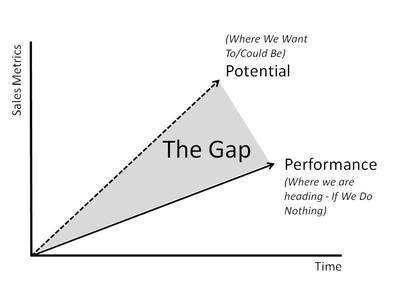
- Work with the team
Address all the findings of your analysis and think over the ways to bring them to life with the responsible team. Work together on new horizons: your crisis management plan should work to the fullest.
3. Optimize cash flow
Identify which investments in your business generate cash and, vice versa, burn it.
- Cut down on non-essential expenses
Find all non-essential expenses you currently have and cut down on them. Of course, except for health insurance for your employees as people are always first.
- Discuss the rental cost
Talk with your property owners and discuss the decrease in the rental cost. During crisis management, both sides should walk in each other’s shoes and understand the situation.
- Stop new launches
Do not consider experimental activities and new launches during crisis management. Remember that non-essential expenses are not efficient options to include in the crisis management plan.
- Prioritize marketing campaigns
Of course, it’s better not to stop marketing campaigns. However, if it is a necessity, stop expensive campaigns aimed at brand awareness. Also, you could use this time to reorganize your SEO game plan and adjust it to the situation. Your crisis management plan should include those campaigns aimed at lead generation and loyalty.
Steve Jobs liked to repeat:
People think focus means saying “Yes” to the thing you’ve got to focus on. But that’s not what it means at all. It means saying “No” to the hundred other good ideas that there are. You have to pick carefully.
I’m actually as proud of many of the things we haven’t done as the things we have done.
4. Promote constant communication with partners and stakeholders
Your crisis management and communication plan should heavily rely on quick actions. There should be transparency and clarity regarding decisions made and actions taken. Support regular communication with executives, partners, stakeholders, and other decision-makers.
5. Analyze your products and services
- Figure out what is needed most
Analyze your products and services and figure out those that are needed most. At the same time, stop producing or delivering those products that have no or minimal demand during the crisis.
- Think about diversification
If your products or services are not in demand during the crisis, include in your crisis plan diversification to broaden your business’s horizons.
6. Find alternatives to your supply chain
Many countries closed their borders. It had an impact on suppliers. Some of them shut down. Some are not available.
- Look for local alternative suppliers
Local alternatives could be the best option. Both parties will benefit.
7. Stay close to your customers
- Think about special offers
Special offers is a good way to stay close to your customers. During the COVID-19 crisis, think about healthcare-related organizations if they are a part of your client base.
- Reach out to your customers
Show your customers you care about them and offer ways to cooperate with them. Just ask how they are doing and if there is anything you can do for them. These crisis times can help you build and strengthen your relationship. Be sure to include this important point in your management plan.
- Adjust your marketing
Update your positioning and consider microtargeting if needed to better serve your customers.
- Think about the additional value
Additional value can help you stand out among competitors. Think how you can deliver it as soon as possible and find the ways to greatly position yourself: what your competitors do not do, how to stand out, etc.?
8. Manage your resources even better than before
Only a few industries keep on track during this crisis: online entertainment, pharmacy, and some others. If you are not a part of them, it is highly likely that your profit fell.
Your resources is the power of your crisis management plan. You have to be productive as before even if their number is cut down.
That’s why you need to be sure that all of your resources are optimally loaded with tasks and no task is left behind. If there are any changes in the resource workload, there should be an instant reaction to them with no hassle and waste of time.
- Work with human resources
Quality employees are one of the most valuable assets of a successful organization. 71% of CEOs see them as the most important driver of the business’s success.
- Optimize resource workload
Proper resource allocation helps keep everyone’s workload on an optimal level. The situations when a resource is overloaded or underloaded are easy to avoid with the special resource management software.
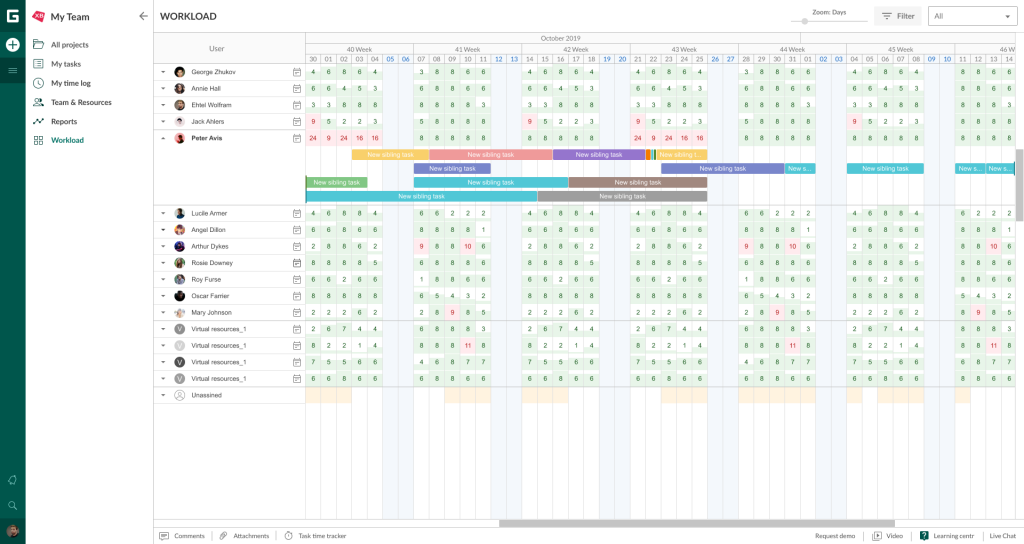
- Apply knowledge management techniques
The crisis is the time when your team can get smaller. Someone took sick days. Or, unfortunately, redundancies can become a part of the crisis management plan and hiring is not expected.
Knowledge management tools will help you keep everyone informed and updated.
- Prioritize time resources
Time always matters. Try to save it as much as possible. Use special tools to visualize and keep workflow. It will help you save your time resources on regular meetings.
Also, use prioritization techniques to cut down on unnecessary activities.
GanttPRO is online project management tool based on Gantt charts. It helps managers and teams efficiently manage their plans, resources and their workload, and prioritize activities.
9. Support your community
During the crisis, every activity and input count. Find out what activities take place in your location and take part in them as a business. But be honest and do not promote it. Come with a personal touch.
What’s next?
It is still unknown what scenarios we can expect. However, it is already clear the global economy will go through a downturn and the crisis is inevitable. Make sure you are prepared enough to keep your business afloat now and help it recover after the pandemic is over. Our checklist will help you.
